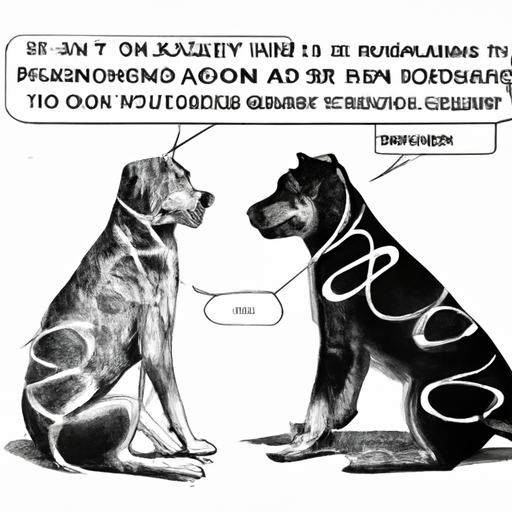If you’ve ever had the chance to witness dogs mating, you might have seen something that, at first glance, appears odd. After the act, the dogs seem to be stuck together, back-end-to-back-end. This phenomenon, known as ‘tying’ or ‘knotting’, is a normal occurrence in canine reproduction. But why does it happen, and should you be worried about it? This article will delve into the science behind this peculiar behavior and the role it plays in nature’s grand design.
Table of Contents
- Understanding the Canine Reproduction Cycle
- The Science Behind ‘Tying’ or ‘Knotting’
- Why Do Dogs Get Stuck After Mating?
- The Role of the Bulbus Glandis
- The Duration of the Tie
- The Risks and Precautions
- Commonly Asked Questions
Key Takeaways
- ‘Tying’ or ‘knotting’ is a natural part of canine reproduction.
- It occurs due to the swelling of the bulbus glandis in the male dog’s reproductive system.
- The tie can last from 5 to 45 minutes and is crucial for successful fertilization.
- Direct intervention is usually unnecessary and can cause harm.
- Consult with a veterinarian if abnormal signs are observed after the tie.
Understanding the Canine Reproduction Cycle
Canine reproduction is a fascinating process that is tailored to ensure the maximum chance of successful fertilization. Unlike humans, female dogs, or bitches, go through a unique cycle known as the estrous cycle. This cycle, which occurs roughly twice a year, includes four stages: proestrus, estrus, diestrus, and anestrus. It is during the estrus stage that the female dog is receptive to mating and can become pregnant. This detailed article on OneTopDog offers a closer look at the complexities of the canine reproductive cycle.
The Science Behind ‘Tying’ or ‘Knotting’
The act of dogs getting stuck together after mating is scientifically known as ‘copulatory tie’ or just ‘tie’. This is a unique characteristic of canine reproduction and is observed in a few other species as well. The tie happens due to a particular structure in the male dog’s reproductive system called the bulbus glandis.
Why Do Dogs Get Stuck After Mating?
The primary reason dogs get stuck after mating is to ensure successful fertilization. When a male dog mounts a female during mating, the bulbus glandis, located at the base of the penis, starts to swell. Once the male dog ejaculates, this gland continues to grow in size, effectively ‘locking’ the male and female together. This ‘lock’ prevents any loss of semen, ensuring that the maximum amount of sperm is delivered to fertilize the female’s eggs.
The Role of the Bulbus Glandis
The bulbus glandis plays a crucial role in canine reproduction. Its primary function is to lock the male’s penis inside the female’s vagina during ejaculation. This locking mechanism ensures that the sperm is deposited directly into the female’s uterus, increasing the chances of successful fertilization.
The Duration of the Tie
The length of the tie can vary greatly, typically ranging from 5 to 45 minutes. During this period, it’s important not to try to separate the dogs forcefully as it can lead to injury. The dogs will naturally separate when the swelling of the bulbus glandis subsides. Here’s a useful guide from OneTopDog that elaborates more on what to expect during and after the tie.
The Risks and Precactions
While the tie is a natural occurrence, there can be potential risks. If the dogs try to pull away forcefully, it can cause injury to both. If you notice your dogs tied together, try to keep them calm and do not attempt to separate them. Instead, ensure that they are comfortable and safe until they separate naturally. If any abnormal signs, such as excessive pain or bleeding, are observed, consult with a veterinarian immediately.
Frequently Asked Questions
-
Is it necessary for dogs to tie for successful reproduction?
No, it is not always necessary. While the tie increases the chances of successful fertilization, pregnancies can occur without it. -
Should I intervene if the tie lasts for a long time?
In most cases, no. The dogs will naturally separate when the swelling subsides. However, if the tie lasts for more than an hour, or if the dogs appear to be in distress, it’s advisable to seek veterinary assistance. -
Can the tie cause harm to the dogs?
While the tie itself is harmless, injuries can occur if the dogs attempt to separate forcefully. This is why it’s important to keep them calm and comfortable.
In conclusion, the act of dogs getting stuck after mating, or ‘tying’, is a natural and necessary part of canine reproduction. As a responsible pet owner, understanding this behavior can help you ensure the safety and well-being of your pets during this crucial process. For more information on this and other dog-related topics, visit OneTopDog.



